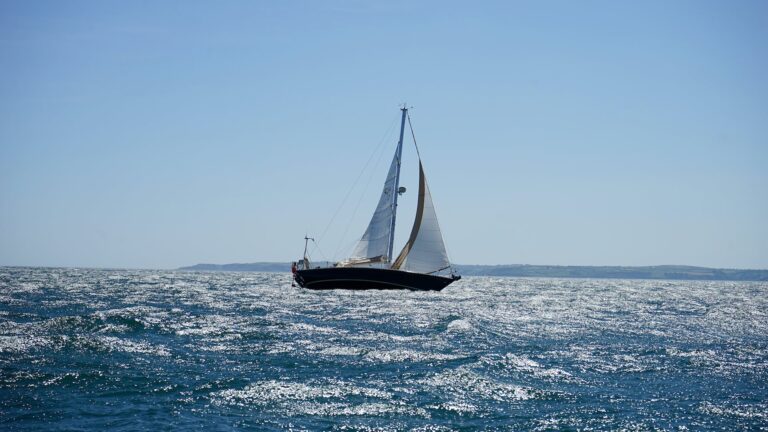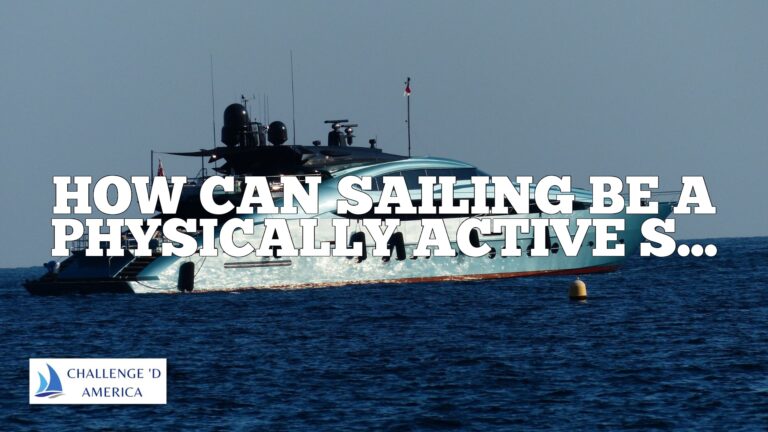What Is The Most Efficient Sail Shape?
Sailing is a sport that has been around for centuries, with the earliest evidence dating back to the 7th century BC in Mesopotamia, when boats were made from reeds and papyrus plants, according to National Geographic. With the advent of technology and more sophisticated boats, sailing has evolved drastically over the years, with a wide array of sails now available for different types of boats and conditions.
The shape or “cut” of the sail is one of the most important aspects when it comes to maximizing performance on the water, as this will determine how much power is generated from the wind, as well as how fast a boat can accelerate and decelerate in various conditions. So what is the most efficient sail shape? Let’s take a closer look at both deep and flat sails to find out!
Deep Sail Shape:
A deep or “full” sail shape is one that is rounded along its leading edge (the edge closest to the wind), while its trailing edge (the edge furthest away from the wind) remains relatively flat or slightly curved inward towards its center line (also known as camber).
This type of cut is designed to capture more wind than a flat cut and provide more power when accelerating, which makes it ideal for racing boats that need maximum speed and maneuverability, such as dinghies or catamarans in light winds or during upwind sailing (when sailing towards the direction from which the wind blows).
Deep sails also generate more lift than flatter sails, allowing them to be used effectively even in heavier winds where other types would struggle to stay upright due to their lack of stability.
The downside of this type of cut is that it can create too much power in strong winds, causing drag on the boat and reducing its speed – but this can be counteracted by reefing (reducing) the amount of sail area exposed to the wind by partially rolling down or furling it up if necessary.
Flat Sail Shape:
A flat sail shape is one that has both its leading and trailing edges relatively straight or slightly curved outwards towards its center line (also known as twist).
This type of cut is designed to create less drag than a deep cut by reducing lift while still providing some power when sailing upwind – making it ideal for cruising boats that require more stability than speed in heavier winds where a deep cut would cause excessive drag due to its increased lift production.
The downside with this type of cut is that it generates less power than a deeper cut when accelerating or sailing upwind – which can be problematic if you need maximum speed – but it also reduces drag when sailing downwind or running off with a following wind (when sailing away from where the wind blows) which can be beneficial depending on your needs at sea!
Comparison Of Sail Shapes:
When trying to decide what type of sail will work best for you on your boat, there are several factors you should consider: acceleration vs stability, power vs drag, upwind vs downwind performance, light vs heavy air conditions, etc.
Generally speaking however, if you need maximum speed then a deeper cut may be best for you as it provides more power when accelerating – however if you need more stability then a flatter cut may be better suited for heavier air conditions where excessive lift could cause your boat to become overpowered easily. Ultimately though, each situation will depend upon your specific needs so make sure you consider all factors before making your decision!
Conclusion
In conclusion, there isn’t necessarily one single “most efficient” sail shape – rather each situation will depend upon specific needs such as acceleration vs stability, power vs drag, upwind vs downwind performance, light vs heavy air conditions etc.
Generally speaking however, if you need maximum speed then a deeper cut may be best for you as it provides more power when accelerating – whereas if you need more stability then a flatter cut may be better suited for heavier air conditions where excessive lift could cause your boat to become overpowered easily.
Ultimately though, each situation will depend upon your specific needs so make sure you consider all factors before making your decision!




![sailing-knot-boating-nautical-anchor-sailboat What Is The One Knot Everyone Should Know?[Editing Required]](https://challengedamerica.org/wp-content/uploads/2023/02/sailing-knot-boating-nautical-anchor-sailboat-768x432.jpg)


